AMD’s GTX 560 Ti Counter-Offensive: Radeon HD 6950 1GB & XFX’s Radeon HD 6870 Black Edition
by Ryan Smith on January 25, 2011 12:20 PM ESTThe Test & Gaming Performance
For our testing we are using both AMD and NVIDIA’s latest drivers where suitable. For AMD this means the 11.1a Hotfix, and for NVIDIA this means the 266.58 drivers for the GTX 400 and 500 series, 266.56 for the new GTX 560 Ti, and 262.99 for the GTX 200 series. Compared to our previous benchmarks NVIDIA Civilization V performance is way up, and SmallLuxGPU performance is up for both AMD and NVIDIA. There are no significant performance improvements elsewhere.
For NVIDIA cards all tests were done with default driver settings unless otherwise noted. As for AMD cards, we are disabling their new AMD Optimized tessellation setting in favor of using application settings (note that this doesn’t actually have a performance impact at this time), everything else is default unless otherwise noted.
| CPU: | Intel Core i7-920 @ 3.33GHz |
| Motherboard: | Asus Rampage II Extreme |
| Chipset Drivers: | Intel 9.1.1.1015 (Intel) |
| Hard Disk: | OCZ Summit (120GB) |
| Memory: | Patriot Viper DDR3-1333 3 x 2GB (7-7-7-20) |
| Video Cards: |
AMD Radeon HD 6970 AMD Radeon HD 6950 2GB AMD Radeon HD 6950 1GB AMD Radeon HD 6870 AMD Radeon HD 6850 AMD Radeon HD 5970 AMD Radeon HD 5870 AMD Radeon HD 5850 AMD Radeon HD 5770 AMD Radeon HD 4870 NVIDIA GeForce GTX 580 NVIDIA GeForce GTX 570 NVIDIA GeForce GTX 560 Ti NVIDIA GeForce GTX 480 NVIDIA GeForce GTX 470 NVIDIA GeForce GTX 460 1GB NVIDIA GeForce GTX 460 768MB NVIDIA GeForce GTS 450 NVIDIA GeForce GTX 285 NVIDIA GeForce GTX 260 Core 216 |
| Video Drivers: |
NVIDIA ForceWare 262.99 NVIDIA ForceWare 266.56 Beta NVIDIA ForceWare 266.58 AMD Catalyst 10.10e AMD Catalyst 11.1a Hotfix |
| OS: | Windows 7 Ultimate 64-bit |
For our look at gaming performance we’re going to skip our running commentary at this time. In practice the 1GB 6950 is just as fast as the 2GB 6950 at 1920x1200 and 1680x1050 – the essential resolutions for a $260 card. It’s only at 2560x1600 and Eyefinity resolutions that the 2GB card makes a difference with most games at this time. This is likely to change in the near future, but for the time being –and as you’ll see – there’s little disadvantage to a 1GB 6950 right now.
Meanwhile we’re also including the XFX Radeon HD 6870 Black Edition in these charts. In general it’s around 5% faster than a stock-clocked 6870, which isn’t enough to cut in to the GTX 560 Ti’s 10-15% lead. At $20 less than the GTX 560 Ti this makes it a potential value spoiler, but not a direct competitor.
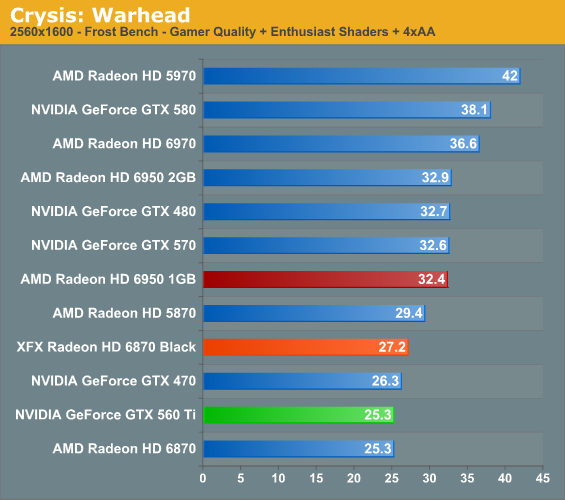
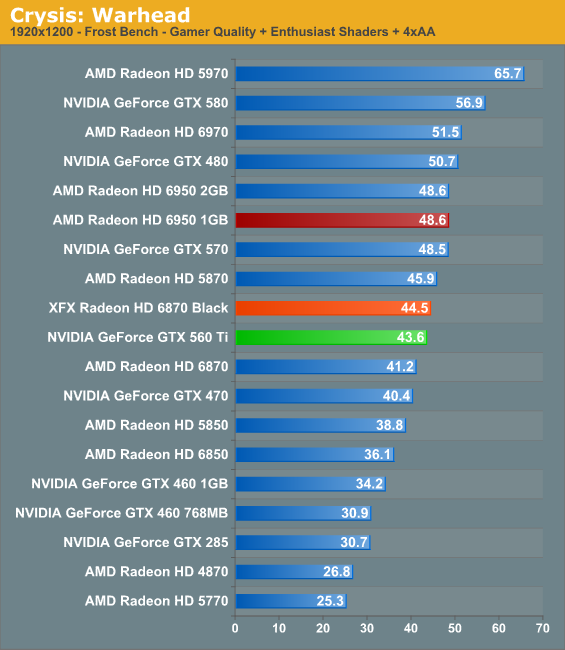
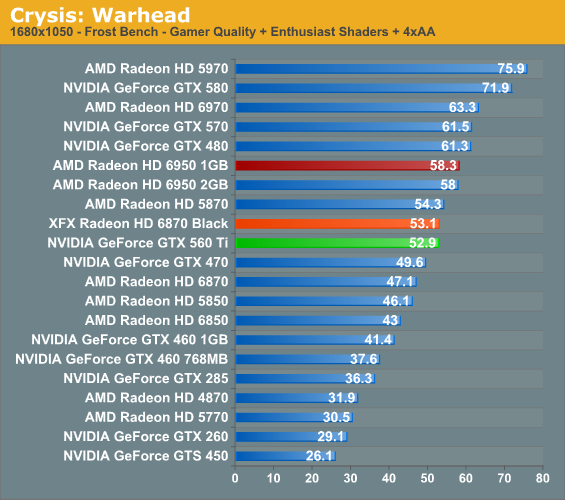
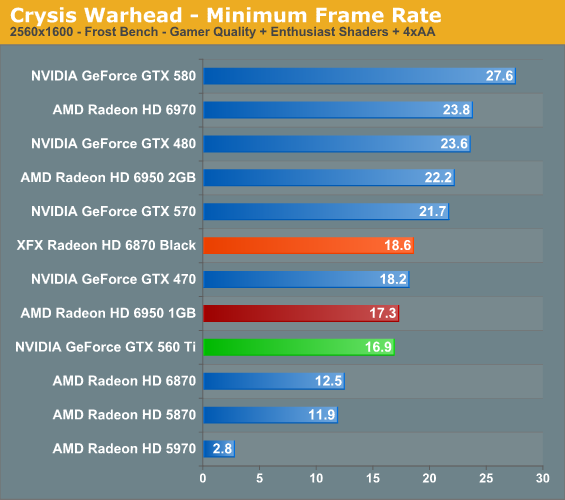
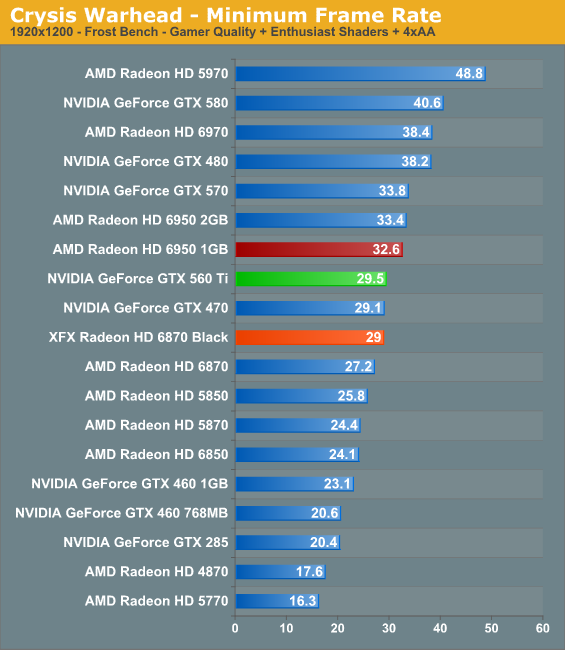
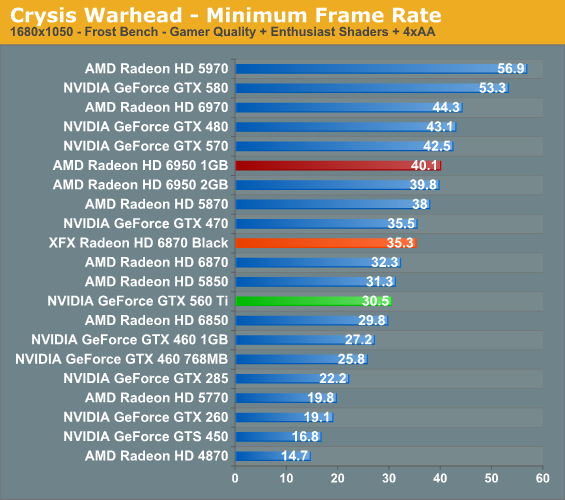

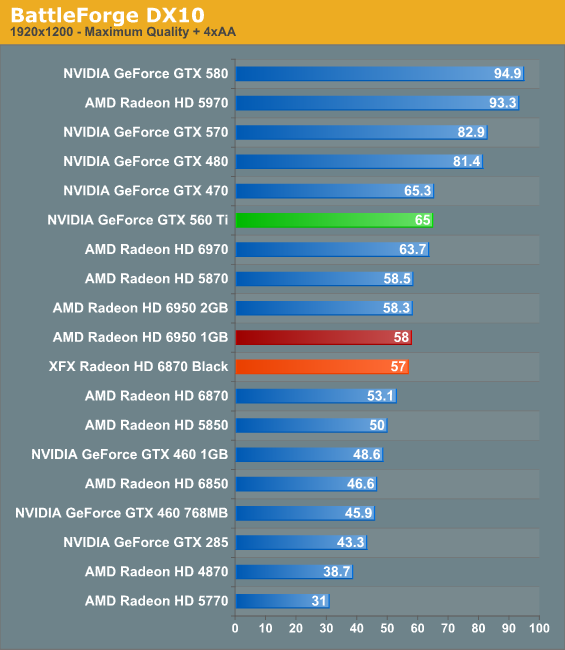
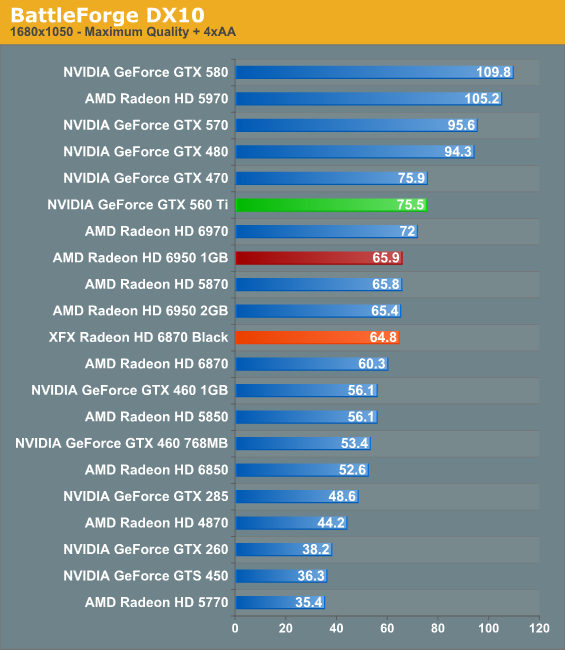

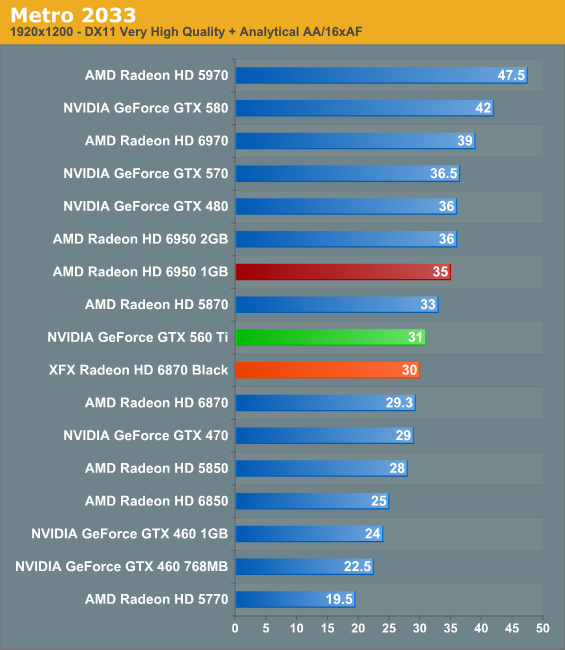
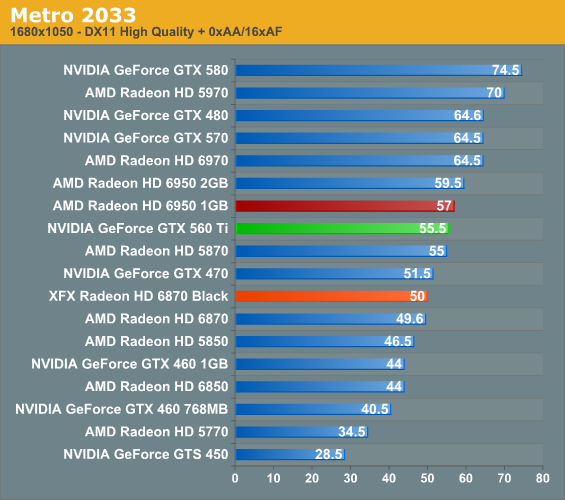
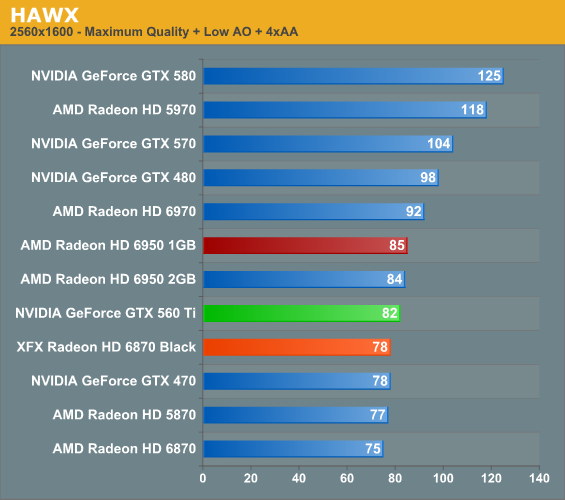
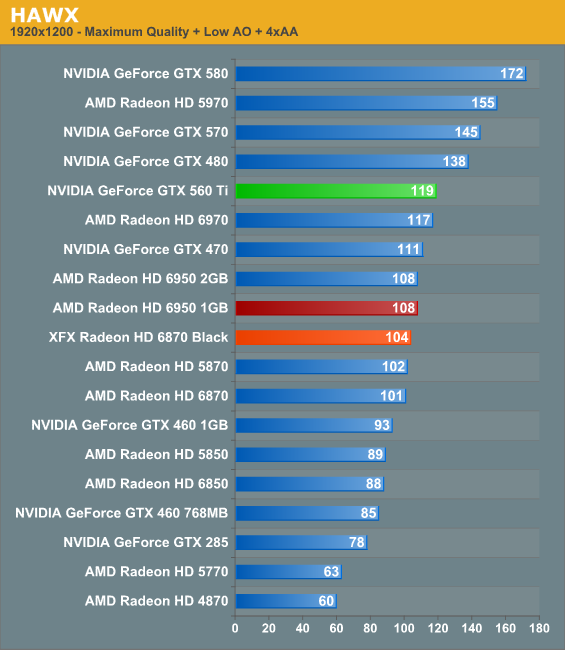
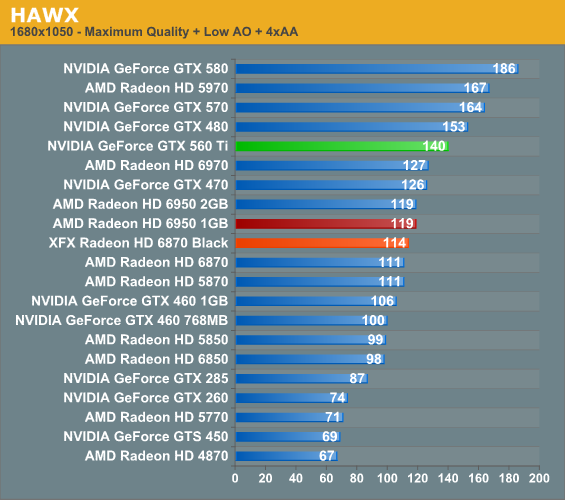
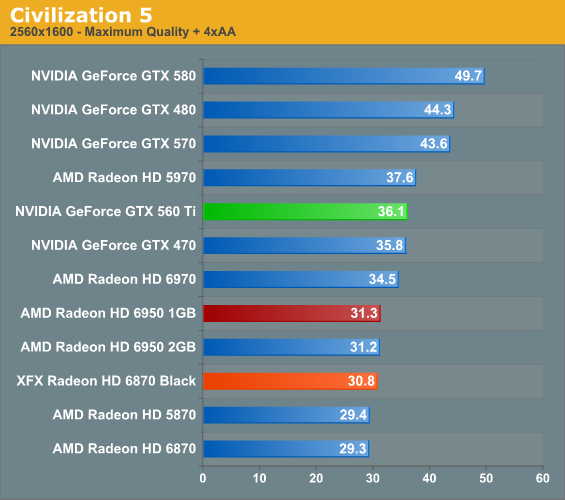
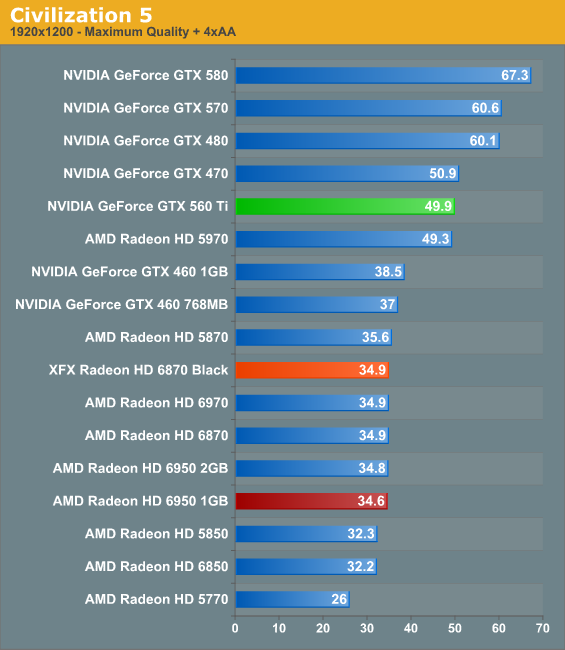
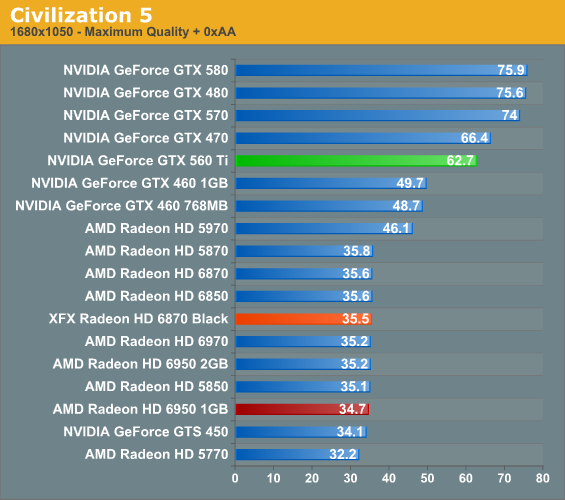
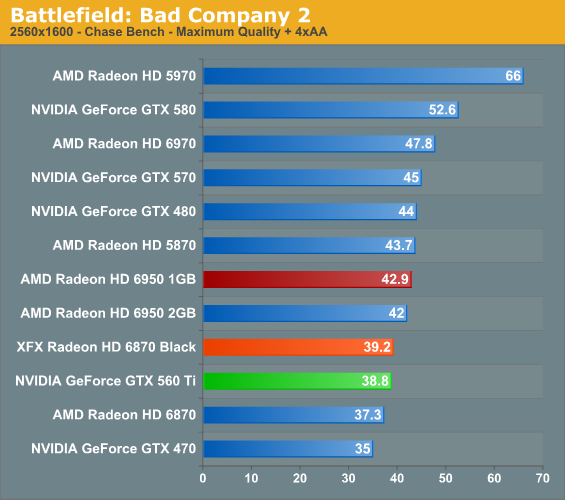
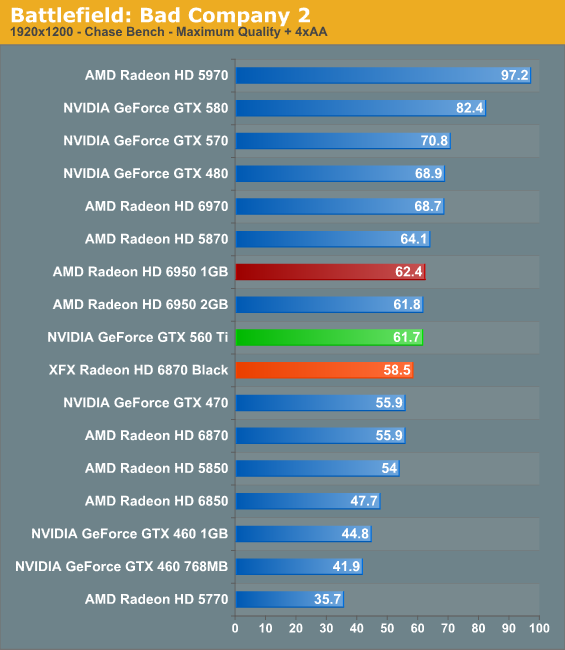
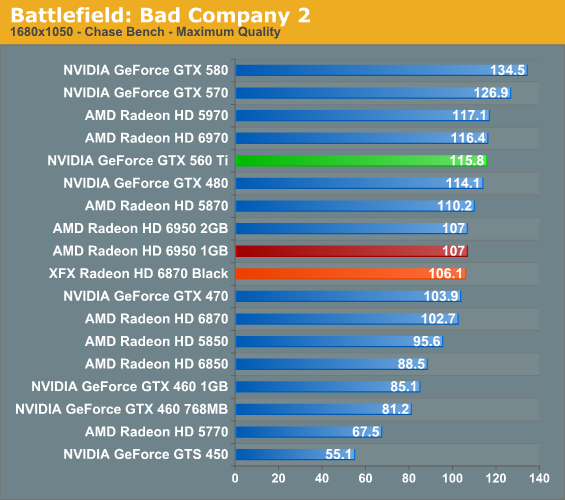
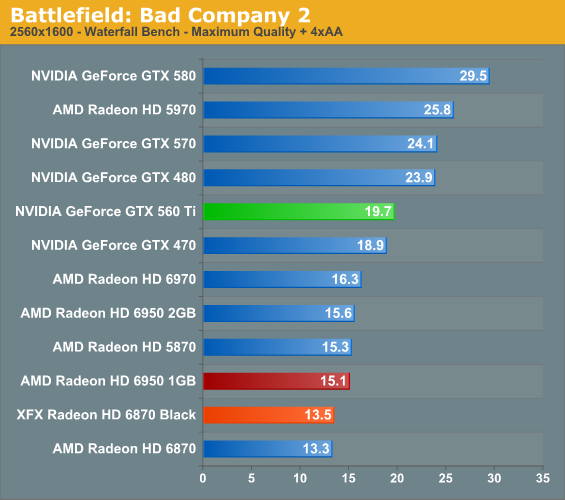

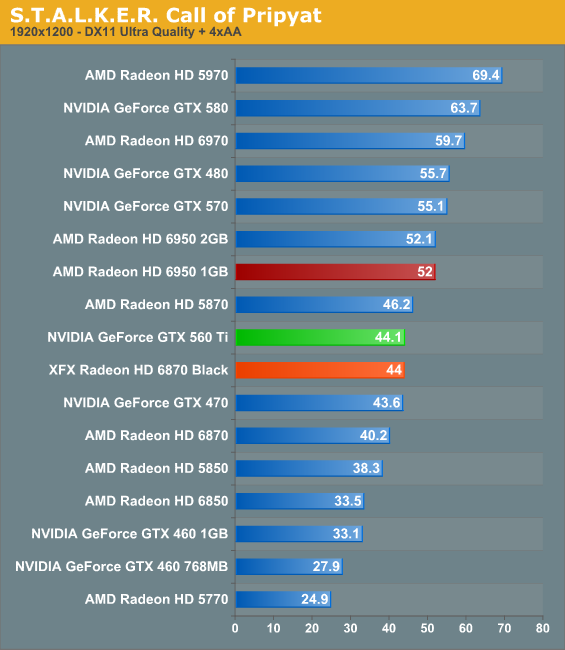
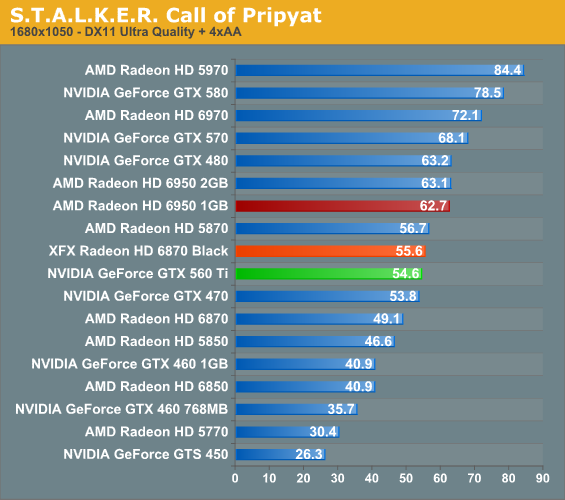
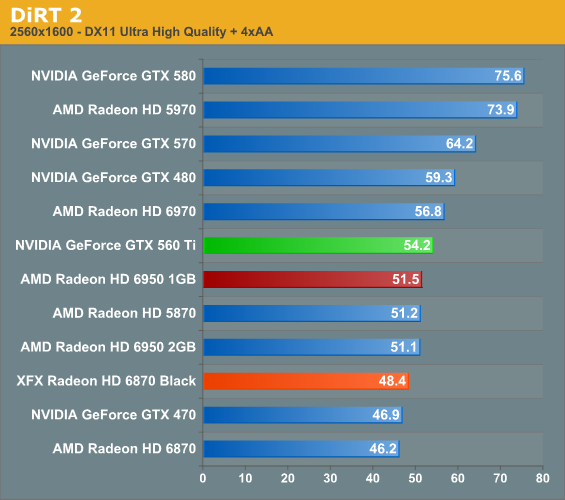
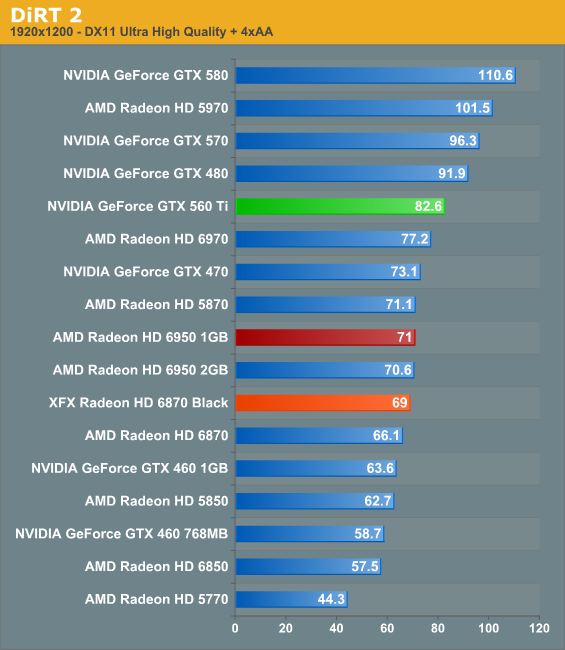

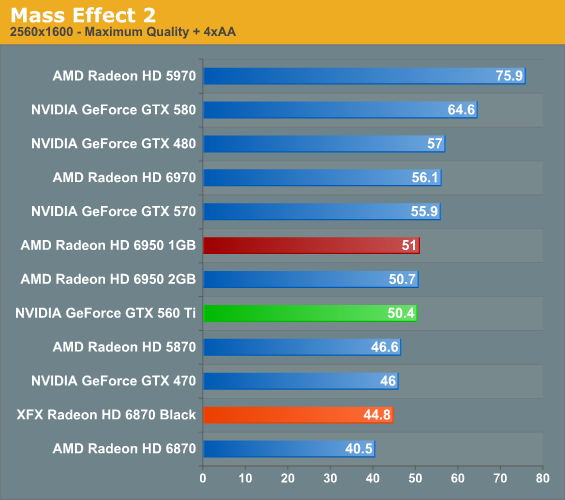
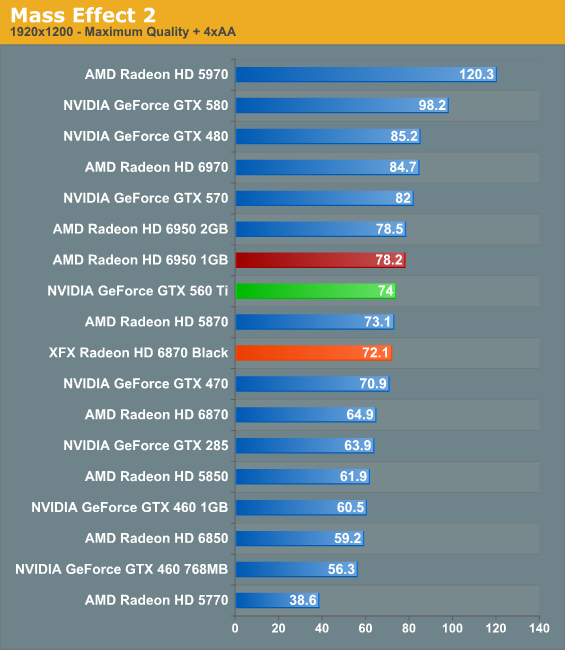
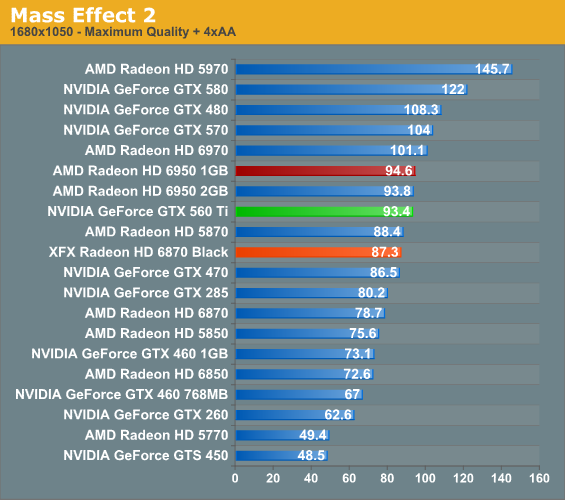




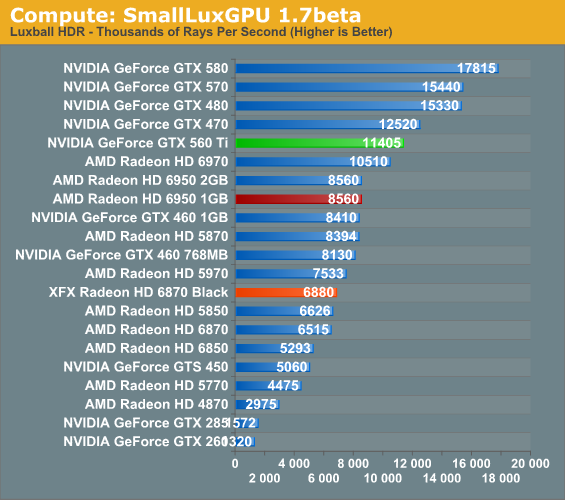










111 Comments
View All Comments
recon300 - Tuesday, March 29, 2011 - link
I haven't seen this question asked yet, so I'm hoping one of you may have the answer. I have noticed that the XFX 6950 is now available with the same dual-fan 3-pipe vapor chamber heatsink setup as is found on their 6870 Black Edition. They literally look identical. I'm wondering if anyone can confirm whether they also share the same acoustic properties... in other words, the XFX 6870BE (as reported by AnandTech) has an idle and load rating of 41.4dB. I wonder if the 6950 has identical (or close) acoustics. Because if the 6950 is as quiet as the 6870BE, I think I'll go with the 6950. Thanks.